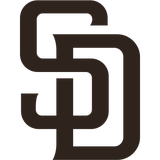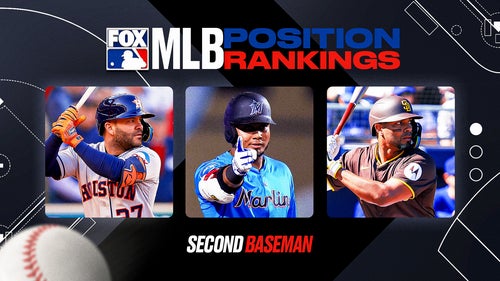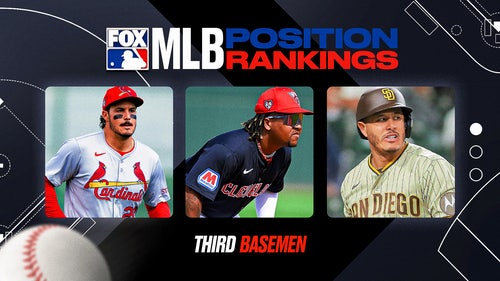
MadFriars' End of the Year Announcer Series - Fort Wayne

MadFriars presents part two of our year-wrap up, this time with John Nolan, one of the play-by-play voices of the Fort Wayne TinCaps.
Fort Wayne TinCaps:
The Fort Wayne TinCaps were billed as the most talented team in the Padres' farm system at the beginning of the 2016 season, but they ultimately missed the playoffs for the first time in seven years and finished with a record of 62-78. While the on-field success wasn't what the organization hoped for, plenty of top talent called Fort Wayne home this past season.
Top Players: Catcher Austin Allen is an easy and obvious choice as the top performer of the year for Fort Wayne. Allen opened the first month of the season by hitting .460/.539/.603 and followed that up with a miserable May. The May dragged down his solid numbers, as he hit at least .295 in every other full month. Allen finished sixth in the Midwest League with a .320 average and the backstop only struck out 69 times in over 400 at-bats.
The transformation of outfielder Michael Gettys this year may have been the biggest positive in the system. When the Padres took him at the top of the second round in 2014, there were many who questioned whether the muscular athlete would ever be able to make enough contact that his stellar raw tools would matter. This year, a vastly improved physical and mental approach began to hint that maybe he will, helping him emerge as the top position prospect on the TinCaps roster. He still struck out too often, and would occasionally let one bad at-bat carry over for a while, but he hit the ball hard to all fields at both levels, and provided value in every facet of the game.
On the mound: Acquired from the Orioles in exchange for Odrisamer Despaigne (who Baltimore waived before the end of the season), J.C. Cosme was impressive in his first look at full-season ball. Despite his slight frame, the 20-year-old Puerto Rican can hit 94 with his fastball, but works more consistently - and still effectively - right around 90. While his overall numbers were quite good, Cosme was most impressive when he was working on normal rest in the rotation rather than limited appearances in April and July meant to protect him as he nearly doubled his innings total from 2015. He posted a 2.91 ERA in his 18 starts, averaging just under five innings per start.
Lefty Jerry Keel started the year in the bullpen for Fort Wayne, but injuries pressed him into the rotation. Keel doesn't possess big-time velocity but he is smart and knows how to pitch. He had a 3.03 ERA in seven second-half starts before being promoted to Lake Elsinore. Fellow lefties hit just .186 off of the former CSU Northridge hurler in Fort Wayne in 2016. If you are versatile, left-handed and can actually get lefties out, there is a path to the big leagues for you.
Minor League Announcer Series: John Nolan
Broadcaster John Nolan saw more TinCaps baseball than anyone. The Syracuse graduate just wrapped up his fourth year of play-by-play commentary for Fort Wayne. Nolan gave us his insight on this year's version of the Fort Wayne TinCaps.
MadFriars: After Michael Gettys was promoted at the All-Star break, the team really began to struggle. What did he bring to the team not only from performance but from an energy and leadership standpoint?
John Nolan: Yes, losing Michael Gettys certainly hurt the 2016 TinCaps in more ways than one. It's worth noting, though, that he was one of 20 guys promoted from Fort Wayne over the course of the season, so the team's poor record in the second half goes beyond simply losing Michael.
But as anyone who follows Padres prospects knows, Michael flashes all five tools. The development he showed from 2015 to 2016 in the Midwest League was remarkable, and even the progress he made after a slow start to the season in April to where he finished was quite impressive.
So what did he bring? Well, as the starting center fielder and number three hitter, just about everything. At the time he was called up, he led the Midwest League in stolen bases (24) and outfield assists (11). He was leading the TinCaps in total bases (107), hits (78), triples (5), and runs (37), and toward the top of every category. They don't have WAR or advanced fielding stats available for the Midwest League (and with his great range, he'd rate well), but in terms of available advanced numbers, for the number of plate appearances he had, his weighted runs created (wRC+) was the highest on the team at 134, and ranked in the top 20 of the league.
Numbers aside, in short, he was playing like a stud. The best example of this came at Dayton on June 11. He started the night 0-for-3 with a strikeout. Michael himself said the 2015 version of him would have been mentally flustered and more or less done for the night. But the 2016 version of Michael went on to hit a game-tying home run in the seventh, a game-tying triple in the ninth, and a go-ahead single in the 11th. He grew in a lot of ways, but he points to the mental progress as the most significant.
Fans will also like how he told manager Anthony Contreras he wanted to play every day and basically did. During his time in Fort Wayne this year, he played in 68 of 70 gamesâtied for second in the league. Top prospects are usually given more rest. And Michael isn't someone who's ever out there going through the motions. He has an exceptionally high motor. So his play set an example for teammates and even though he wasn't one of the older guys on the roster, as a returning player, he had a leadership role.
What did you see from Anderson Espinoza and Chris Paddack in their limited amount of innings this season?
John Nolan: With Anderson Espinoza, I would caution Padres fans not to be alarmed by the less-than-dominant numbers he posted in the Midwest League for a few reasons. To start with, he was the youngest player in the entire league.
Also, the numbers don't always tell the full story, right? Not to make a list of excuses but you run into situations where--whether it was the defense behind him, or a scoring decision, or the circumstances of minor league travel--all of a sudden his ERA looks higher than you'd like to see it. This is accentuated when you're on a pitch/innings limit. Actually, here's a good example of where advanced stats can give you a better indication. Among TinCaps who pitched 30-plus innings this year, his ERA ranked 12th. His FIP? Sixth. He had a solid K/BB ratio (3.50), only allowed one homer, and looked very good in his final two appearances of the season (two runs in nine innings).
But it's silly to even dig into those numbers with him at this stage. Like the scouting reports tell you, what's maybe most impressive about him is that he makes everything look fairly effortless.
The few times he cranked up his fastball to the high 90sâin high leverage spots or when he knew he was facing his final batterâit was fun to watch. He says he's aware of the fact that he still needs to develop all three of his pitches, but especially gain more consistency with his changeup and curveball.
What fans will like to know is that despite his age, he does have a presence to him. There was an instance when an opposing batter hit a long foul ball down the line against Anderson and the hitter flipped his bat to the mound. Let's just say the next couple pitches were fastballs up and in.
Considering he was thrust into a difficult situation being traded mid-season and becoming the top prospect in a new organization, on top of still acclimating himself to life in a new country and speaking a different language, he did a good job of earning the friendship and respect of his teammates.
Minus the cultural aspect, the same goes for Chris Paddack. "Amazing" is an apt word to describe how Paddack was pitching in the Marlins organization and how he fared in his three Fort Wayne starts before the injury. In my four years of calling games in this league, I've never seen a more dominant pitcher, albeit for just a short time. His Vulcan changeup made opposing hitters look silly.
It's never easy to return from Tommy John surgery, but Chris strikes me as someone who certainly has the work ethic and determination to fight his way back to an elite level.
Ruddy Giron struggled badly but picked things up a bit in the second half. Did you see any significant difference in him?
John Nolan: He got off to a tepid start in April, then spent a week on the disabled list, and all of a sudden didn't have his timing and things just snowballed. He slashed .183/.239/.240 with no homers through his first 66 games with the TinCaps this year before turning it around with a line of .284/.355/.406 and two homers over his final 40 before going up to Lake Elsinore in the second half of August.
The coaching staff worked with him to make some mechanical adjustments, including keeping his front hip in so he wasn't vulnerable to breaking balls on the outside part of the plate. Another key was working on his vision at the plate so that he had a better idea of what was coming his way. It appeared once he started swinging at more of "his" pitches rather than "pitcher's pitches," we were reminded of the Ruddy who dazzled the Midwest League for much of the 2015 season.
Ruddy is a coachable player and showed signs of improvement defensively as the season went along, too. What you like to see is that he seems to learn from mistakes and make the necessary adjustments to improve.
Austin Allen is our player of the year at Fort Wayne. What made him so effective offensively and did you see noticeable progression from him defensively as the season progressed?
John Nolan: I think what made Austin so effective offensively is how he stayed consistent with his approach throughout the season. Though he's a big guy, he's not a dead pull hitter and can drive the ball to all fields. In fact, he says his natural swing is to left-center. So while some teams shifted against him, and occasionally he'd drive it through or over a shift, he also took what the defense gave him, so to speak, and had plenty of opposite-field hits.
His incredible April was well documented, but don't sleep on how he hit .364 in August, a month in which he set a franchise record for consecutive games with a hit (24). That he was managed to be so consistent for a full season at the plate as a catcher is a testament to the hard work he put in not just during the season, but going back to last offseason.
And, yes, this manifested itself defensively, too. I think he knows there's work to do in all facets of his game, especially behind the plate, but those who saw him in 2015 versus 2016 said he made good progress there.
When evaluating a catcher, the uninitiated may be inclined to dwell on stolen bases allowed and caught stealing. Sure, that's important, but I know when catching instructor John Nester visited, they were every bit as focused on the nuances of calling a game, building a rapport with pitchers, receiving, framing, etc. Austin also benefited from having Raul Padrón, a former catcher, on the coaching staff.
On the pitching side, J.C. Cosme looked to be the TinCaps' most effective starter. What did you see from him?
John Nolan: J.C. wasn't too flashy, but with few exceptions was solid throughout the year. And those few exceptions were probably good learning experiences for him as he learned to pitch through adversity.
He did a good job of mixing a two-seamer with a changeup, curveball, and slider. If you just size him up, you could overlook him as he's a slender 6-foot-2, 155 pounds. But Anthony Contreras liked J.C.'s competitiveness on the mound. So did other managers apparently, as he got to start the All-Star game for the Eastern Division. The fastball was generally in the low 90s, though he could dial it up to the mid-90s at times.
For the numbers crowd, among those who threw 100-plus innings in the MWL, J.C. had the fifth lowest FIP (2.81) and also the 10th best K/BB ratio (4.09).
It's exciting to think about what increased strength could do for him going forward.
Austin Smith showed flashes but was inconsistent overall. What does he need to do in order to get better?
John Nolan: It probably starts with control. He walked more guys than he would've liked to have this year (46 in 90.2 IP) and that's what led to a lot of trouble. His best stretch of the year was from late June into July. Over a six-start stretch, he posted a 1.27 ERA as he struck out 20 and walked seven. But overall, his K/BB ratio was just 1.37.
I think he'd also tell you he needs to trust his secondary pitches more. He can blaze the fastball in the mid-to-upper 90s, but has to remember his changeup and curve are essential as well at this level and going forward.
Jake Nix was solid overall this season. What made him so effective?
John Nolan: First off, I think more than the average 20-year-old pitcher, Jake puts a real emphasis on taking care of his body. He and J.C. Cosme put together the best seasons on the staff and also happened to be the only two pitchers on the staff who went from opening day until Labor Day without a stint on the disabled list (or being sent up/down).
Before you get to his stuff, another thing that stands out about Jake on the mound is his poise. I can't recall a time all season when he appeared rattled out there.
And then his stuff is really good. It's funny because he would tell you his best pitch is his fastball, and as a mid-90s heater it probably is, but Midwest League managers/coaches voted his curveball the best breaking pitch in the league. Complement that with a changeup and he had an All-Star season.
What players that may be considered more "under-the-radar" stood out to you?
John Nolan: The TinCaps used 63 different players over the course of the season, so allow me a moment. I'll limit this to guys who ended the season in Fort Wayne and were with the team for at least half the season.
Peter Van Gansen led Midwest League second basemen in fielding percentage (.981). Again, we don't have advanced fielding stats but he covered a lot of ground, too. And offensively, he low-key had the seventh best BB/K ratio in the league (0.68) and for what it's worth led the league in sacrifice bunts (13). Despite being the smallest guy on the roster, he led the team in games played (125), too. Anthony Contreras said he trusted him with the bat as much as anyone on the squad.
Kodie Tidwell went from being a utility guy off the bench to a utility guy getting to play every day in May who then immediately put up the second longest on-base streak in the league this year (32 games). AC called him "the consummate professional."








